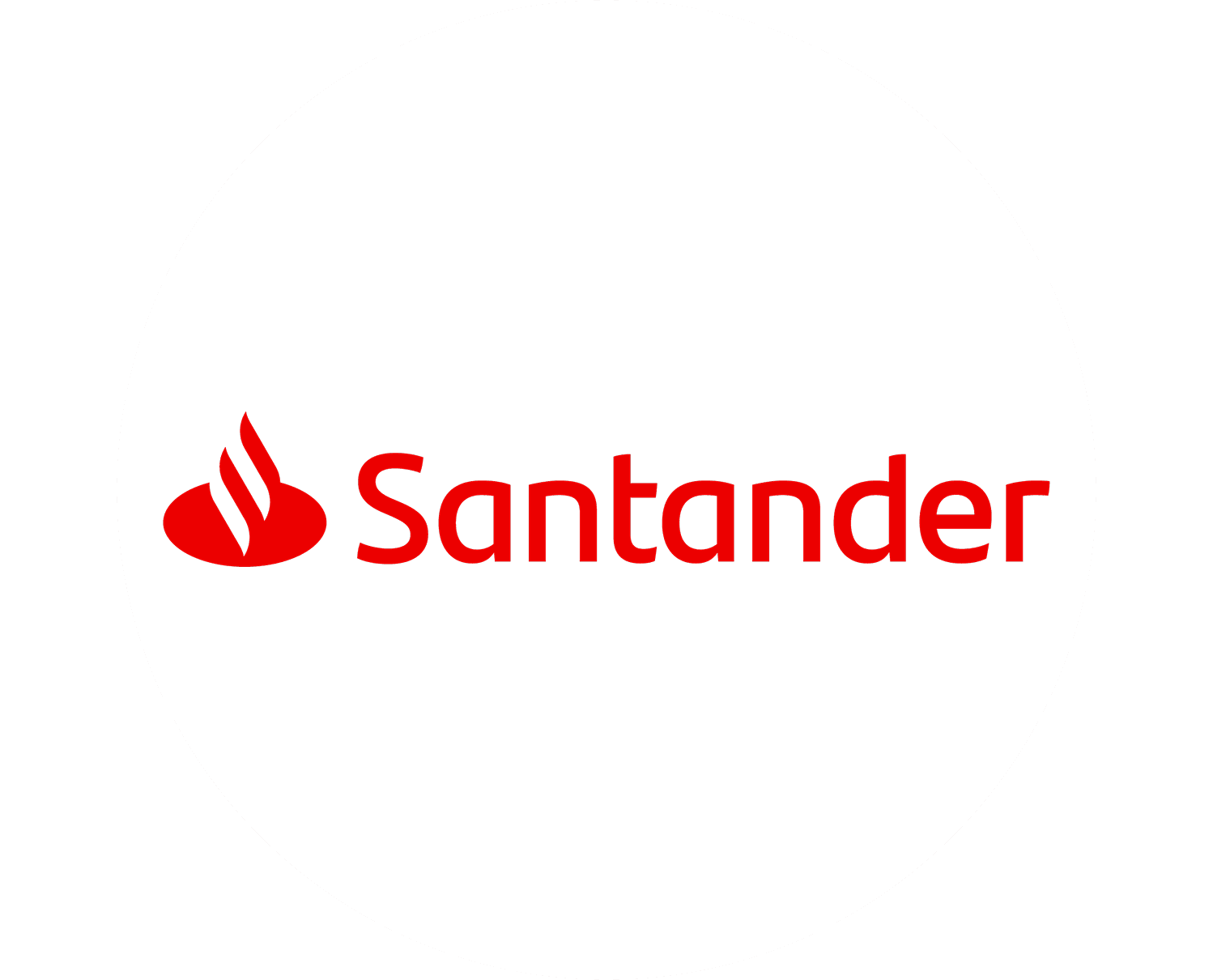
Scale finance to restore Brazil’s native forests
 Santander
SantanderSummary
Combine equity co‑founding, concessional lending and supply‑chain finance to scale native forest restoration and conserve vegetation in priority biomes
Context
As a global banking and financial services institution, Santander Group faces a core decarbonization challenge in addressing financed emissions - those generated by the clients and sectors it supports - across carbon-intensive value chains such as power, oil and gas, aviation, steel, real estate, automotive, and agriculture or land use. In Brazil, this challenge is shaped by three defining factors:
Expanding land-use frontier: Large and dynamic biomes such as the Amazon, Cerrado, and Atlantic Forest are critical to national climate goals, requiring reduced deforestation and expanded restoration.
Emerging carbon and nature markets: High-integrity carbon removals, regenerative agriculture, and agroforestry systems are rapidly evolving but face limited track records, permanence and land-tenure risks, and immature value chains.
Financing barriers: Restoration and regenerative projects are capital-intensive, slow to generate returns, and often dependent on guarantees or blended capital. These conditions make it difficult to align portfolios with Paris-aligned pathways while supporting economic inclusion.
To address these challenges, the institution has implemented a comprehensive transition plan integrating portfolio-alignment targets, green finance mobilization, and enhanced risk management. Santander aims for net-zero emissions across operations and financed activities by 2050, with 2030 targets set for key sectors including power generation (0.11 tCO₂e/MWh), oil and gas (16.98 MtCO₂e across scopes 1–3), aviation (61.71 gCO₂e/RPK), steel (1.07 tCO₂e/t), and automotive manufacturing and lending (75–103 gCO₂e/vkm).
The Group has committed to fully phase out financing for coal-dependent clients (>10% dependency) by 2030 and surpassed its 2025 green finance goal of €120 billion ahead of schedule, now targeting €220 billion by 2030.
Location of the initiative: Brazil
Solution
Santander Brazil has implemented a portfolio approach to unlock restoration at scale:
Co‑found a forest restoration platform (equity): At COP27, Santander co-created Biomas to restore/protect 4 million hectares over ~20 years, planting ~2 billion native trees.
Launch large‑scale projects: In 2025 Biomas announced Project Muçununga (Bahia): BRL55 million to restore 1,200 ha with >70 native species and ~2 million seedlings, targeting ~500,000 carbon credits over 40 years.
De‑risk concessionary lending (financial guarantee): The bank enabled the first reforestation operation under the New Fundo Clima, unlocking BRL100million for Mombak via BNDES with long tenors and single‑digit interest for forest restoration.
Create blended‑finance channels for the bioeconomy: Structured a BRL17million Green CRA (Certificado de Recebíveis do Agronegócio/ Green Agribusiness Receivables Certificate) to lower borrowing costs for 4,500 smallholders and community enterprises (with Gaia, Conexsus, Belterra; subordinated capital from Fundo Vale & Good Energies).
Scale deforestation‑free supply chains (working capital): Co‑led (with other financial institutions and UK groceries) capital markets issuances for the Responsible Commodities Facility (RCF), expanding to US$47million in 2023/24 to finance 122 farms, conserve ~43,400 ha and protect ~20 Mt CO₂ in native carbon stocks.
Ecosystem building: Joined IFACC (Innovative Finance for the Amazon, Cerrado, and Chaco) as first bank member and co‑launched/mentored innovation platforms (e.g., Jornada Amazônia) and the Amazonia Finance Network to improve origination, Technical Assistance/MRV (measurement, reporting and valuation), and crowd in private capital.
Impact
Sustainability Impact
Climate
Scopes targeted: For a bank, the primary lever is Scope 3 (Category 15: Investments/financed emissions); reducing real‑economy emissions via investees and clients and disclosing with PCAF (Partnership for Carbon Accounting Financials)
Observed/expected GHG impact (enabling):
Responsible Commodities Facility (2023/24): ~43,400 ha conserved; ~20 Mt CO₂ carbon stocks protected across participating farms; no deforestation by enrolled farmers; production >180–260 kt soy (year‑specific).
Muçununga (Bahia): ~500,000 credits targeted over 40 years from high‑diversity native forest restoration.
Nature
The Biomas project generates large-scale positive impacts by restoring millions of hectares with native species in multiples biomas across Brazil, sequestering carbon, reconnecting habitats, recovering of ecological functions improving water security and creating local jobs – while avoiding further deforestation, soil degradation and climate risks.
The Muçunungas project protects a rare and fragile ecosystem in Espirito Santo, preventing irreversible biodiversity loss and habitat destruction, while conserving endemic species, safeguarding hydrological balance, and enhancing scientific and cultural value. The project aims to restore more than 70 native species and 2 million seedlings of the Atlantic Forest in eight municipalities, restoring ecological corridors, and gaining biodiversity and soil/water functions.
Social
Biomas projects create positive impacts by generating local jobs in seed collection, planting and ecosystem management, strengthening community livelihoods. They foster inclusion of rural and Indigenous communities, bring new opportunities in sustainable value chains, and enhance climate resilience by protecting water resources and reducing risks of drought and foods. At the same time, they avoid negative impacts such as social conflicts over land use, economic losses from degraded soils, and health risks linked to ecosystem collapse.
Business impact
Benefits
Pipeline growth in transition finance: New origination in nature assets (restoration, DCF soy), diversified fee and balance‑sheet income, and strengthened client franchise in agribusiness and bioeconomy clusters. Participation in IFACC (Innovative Finance for the Amazon, Cerrado, and Chaco) and public commitments support reputation and policy engagement.
Costs
Operating costs: Enhanced due diligence (land tenure, biodiversity baselines), MRV (remote sensing, field audits), and long‑dated portfolio monitoring
How to minimize costs / maximize benefits: Use blended structures (subordinated/first‑loss tranches, guarantees), pool projects to diversify risks, standardize project rating, and secure offtakes and insurance where available.
Impact beyond sustainability and business
Co-benefits
Ecosystem services & inclusion: Seed supply chains, restoration jobs, and community‑based enterprises in the Amazon bioeconomy (Jornada Amazônia cohorts, Conexsus cooperatives).
Potential side-effects
Permanence and integrity risks: Managed through long‑term measurement reporting and verification MRV, conservative baselines, and—on Responsible Commodities Facility RCF—independent Environmental Committee/Advisory Board and third‑party verification.
Implementation
Typical business profile
Corporates seeking high-quality carbon credits and biodiversity-positive offsets.
Companies in net zero journeys that need demonstrable nature-based solutions
Large corporates in high emission sector seeking long-term carbon removal credits to meet net-zero commitments
Financial institutions and investors looking for exposure to nature-based solutions and credible biodiversity-linked assets
Public sector and multilaterals partnering in landscape-level restoration and policy alignment
International corporations aiming to access high-quality, large-scale Brazilian credits for compliance and voluntary markets
Climate- tech startups in reforestation and carbon removal needing innovative blended finance structures
Investors in green finances or impact funds seeking pioneering deals with subsidized capital and bank guarantees
Corporates with voluntary offset strategies looking to buy high integrity carbon credits for innovative Nature-based Solutions projects
Approach
Build the business case & secure sponsorship: Quantify pipeline, impact and risk‑return; align with group climate strategy and risk appetite.
Stand up a cross‑functional team: Corporate & Investment Banking, Sustainable Finance, Risk, Legal, Sustainability, Modeling/MRV (measurement, reporting and verification), Public Policy.
Design a tailored risk framework for NbS (nature based solutions): New rating/risk factors (permanence, leakage, tenure), collateralization pathways, and recourse structure.
Create a project/company rating methodology: Cover financial viability and socio‑environmental & climate integrity; embed PCAF/Scope 3 Cat. 15 reporting.
Deploy instruments by need:
Equity/anchor roles to stand up platforms (e.g., Biomas).
Concessional & guaranteed loans (e.g., Ecoinvest, Fundo Clima via BNDES).
Blended capital market structures (e.g., Green CRA to smallholders; RCF (Responsible Commodities Facility) green CRAs to producers).
Assure integrity & MRV: Eligibility criteria, satellite monitoring, and independent review/verification (e.g., Responsible Commodities Facility Environmental Committee/Environmental Advisory Board; ERM‑NINT (Environmental Resources Management – Natural Intelligence).
Ecosystem & pipeline: Join coalitions (IFACC), innovation networks (Jornada Amazônia) and regional finance alliances (Amazonia Finance Network) to source deals and share learnings.
Stakeholders involved
Project leads: Sustainability, Corporate & Investment Banking (Sustainable Finance), Risk, Legal/Compliance.
Company functions: Structured finance, capital markets, ESG risk, credit underwriting, strategic communications.
Main providers/partners:
BNDES (Brazilian Development Bank) / MMA (Ministry of the Environment) [Fundo Clima]
Biomas (platform); SIM (Sustainable Investment Management) / RCF (Responsible Commodities Facility) [facility]
Conexsus / Belterra / Gaia (Agribusiness Receivables Certificates) [CRA]
Independent MRV (Measurement, Reporting, and Verification) providers and environmental advisory bodies
Other: Farmers/cooperatives, municipalities, nurseries/seed networks, buyers with DCF (Deforestation-and Conversion-Free) commitments and offtakers for removal credits.
Key parameters to consider
Initiative maturity: Biomas and RCF (Responsible Commodities Facility) are operating; restoration supply chains still scaling.
Timeline: Multi‑year origination; reforestation revenue ramps over decades; working‑capital cycles annual (soy).
Lifetime: 20–40+ years for restoration assets; 3–5 years for CRA structures.
Technical constraints: Species selection, seed/seedling availability, fire management, land tenure.
Policy & geography: Align with Arc of Restoration and state/biome priorities. Incentives/subsidies: Fundo Clima terms (1–1.5% p.a., long tenor/grace) contingent on guarantees and eligibility.
Implementation and operations tips
Start with integrity: Codify eligibility/MRV; engage independent advisors early.
Blend capital to crowd in investors: Use anchor equity/first‑loss, guarantees, and fee‑reductions to reach viable borrower rates.
De‑risk tenure & operations: Require clear titles/agreements; provision for wildfire and reversal risks; stage disbursements to milestones.
Scale via partnerships: Tap innovation funnels (Jornada Amazônia) and landscape alliances (IFACC, AFN) to secure bankable deal‑flow and Technical Assistance
Going further
External links:
Source list:
Reuters – “Santander, BNDES back Mombak reforestation, drawing on Brazil climate fund” (Apr 7, 2025)